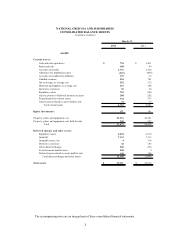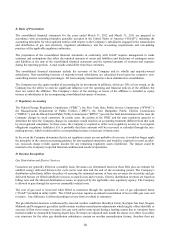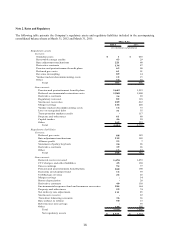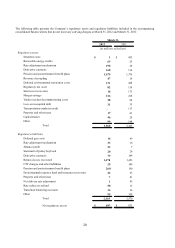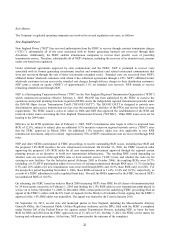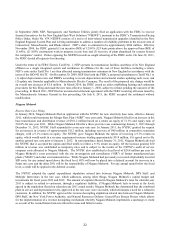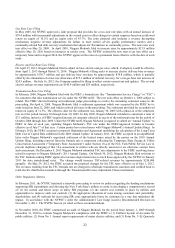National Grid 2012 Annual Report Download - page 14
Download and view the complete annual report
Please find page 14 of the 2012 National Grid annual report below. You can navigate through the pages in the report by either clicking on the pages listed below, or by using the keyword search tool below to find specific information within the annual report.
13
Intangible Assets
Intangible assets represent finite-lived assets that are amortized over their respective estimated useful lives and, along
with other long-lived assets, are evaluated for impairment periodically whenever events or changes in circumstances
indicate that their related carrying amounts may not be recoverable. During the year ended March 31, 2012, the
Company recorded a non-cash impairment charge of $102 million to reduce the net carrying value of its Management
Services Agreement (“MSA”) LIPA contract intangible asset to a fair value of zero, which was determined using an
income-based approach, as discussed in Note 5, “Goodwill and Other Intangible Assets.”
G. Impairment of Long-Lived Assets
The Company evaluates long-lived assets, including property, plant and equipment and finite-lived intangibles, when
events or changes in circumstances indicate that the carrying value of such assets may not be recoverable. In evaluating
long-lived assets for recoverability, the Company uses its best estimate of future cash flows expected to result from the
use of the asset and its eventual disposition. If the estimated future undiscounted net cash flows attributable to the asset
are less than the carrying amount, an impairment loss is recognized equal to the difference between the carrying value of
such asset and its fair value. Assets to be disposed of and for which there is a committed plan of disposal are reported at
the lower of carrying value or fair value less costs to sell. At March 31, 2011, the Company recorded an impairment of
$70 million as discussed in Note 4, “Property, Plant, and Equipment.”
H. Cash and Cash Equivalents
The Company classifies short-term investments that are highly liquid and have maturities of three months or less at the
date of purchase as cash equivalents. Cash and short-term investments are carried at cost which approximates fair value.
I. Restricted Cash
Restricted cash consists of deposits held by the New York Independent System Operator (“NYISO”) and ISO New
England, Inc. (“ISO-NE”).
J. Gas in Storage and Materials and Supplies
Gas in storage is stated at cost, determined on an average weighted cost basis, and is expensed when delivered to
customers. Existing rate orders allow the Company to pass through the cost of gas purchased directly to the rate payers
along with any applicable authorized delivery surcharge adjustments. Accordingly, the value of gas in storage does not
fall below the cost to the Company. Gas costs passed through to the rate payers are subject to periodic regulatory
approvals and are reported periodically to the appropriate regulatory agencies.
Materials and supplies are stated at the lower of cost or market, with cost being determined on an average weighted cost
basis, and are expensed as used or capitalized into specific capital additions as utilized. The Company's policy is to write
off obsolete inventory. For the years ended March 31, 2012 and March 31, 2011 these write offs were not material.
K. Income and Other Taxes
Federal and state income taxes are recorded under the current accounting provisions for the accounting and reporting of
income taxes. Income taxes have been computed utilizing the asset and liability approach that requires the recognition of
deferred tax assets and liabilities for the tax consequences of temporary differences by applying enacted statutory tax
rates applicable to future years to differences between the financial statement carrying amounts and the tax basis of
existing assets and liabilities. NGHI files consolidated federal tax returns including all of the activities of its subsidiaries.
NGUSA is treated as a separate member and calculates its consolidated tax expense or benefit based on the combination
of current and deferred tax expense or benefit of each of its subsidiaries, including NGUSA which is treated as a separate
member. Each member settles its current tax liability or benefit each year directly with NGHI pursuant to a tax sharing
agreement between NGHI and its members. Benefits allocated by NGHI are treated as capital contributions.
Deferred income taxes reflect the tax effect of net operating losses, capital losses and general business credit
carryforwards and the net tax effects of temporary differences between the carrying amount of assets and liabilities for


